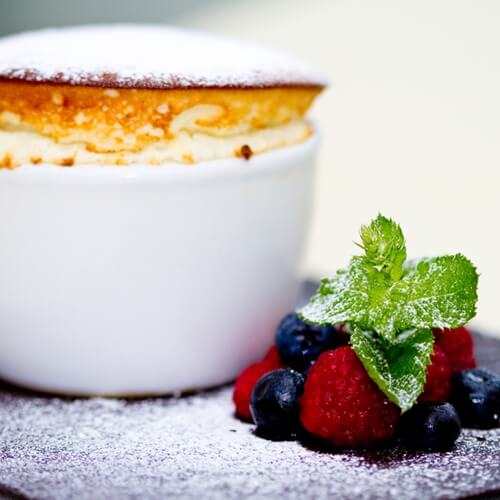Rise To The Challenge: How To Make Savory Souffles

There’s plenty of dessert options one can whip up during online culinary school, like cake, pie, cookies and ice cream. However, perhaps no dish is more decadent than the souffle, a lush and savory cake originally from France that’s made of egg whites and yolks. As luxurious as it might appear, chefs of almost any skill level can serve up a soufflé in no time. Just follow these tips and tricks to have your dinner guests saying “tres bien.”
How to rise above
A souffle has a certain texture and consistency because of the way the egg whites rise up, resulting in that oh-so decadent cake. Often times, not having the right mixture of ingredients can cause the souffle to fall, a dessert-time disaster if there ever was one. To prevent this, just add in either lemon juice or tartar, which will strengthen the overall mixture. And to help improve the durability of the batter, try adding a pinch of salt or a dash of sugar to the half-whisked egg whites.
Watch your eggs
When making your souffle, there might be a tendency to over-fold the egg whites, thus making for a more solid mixture. However, the most succulent of souffle dishes doesn’t need as much folding, and you should only ever whip the eggs until the streaks of white disappear. It may take fighting against some natural instincts, but it’s the only way to get that perfect consistency. As an extension of this, always use room temperature eggs, as they’re much easier to manipulate and result in a fluffier cake mix.
A little structural support
As the souffle rises, it’s going to need something to lean against in order to prevent it from falling down or deflating. To help lend that extra support, simply brush the interior of the dish with butter and breadcrumbs – or use sugar for those sweeter souffles. During the baking process, this will help to improve the durability of the mixture itself. Another good idea is to use a knife to remove any raw mix from the sides, which will result in a more uniform shape.
Consider your dishes
With souffles, even the dishes you use can have a noticeable effect. Anything ovenproof is good, especially when it’s one larger dish. However, this doesn’t always lend itself to the best serving quality. To that end, a ramekin cup with a capacity of 400 milliliters is optimal, and even some ovenproof tea cups can make great substitutions. No matter what you choose, it should be a dish you can move quickly and easily, as souffles need to be served as soon as they leave the oven to prevent deflation.


